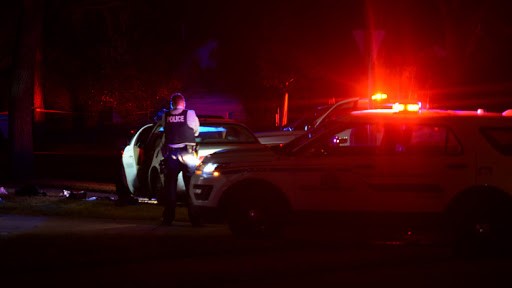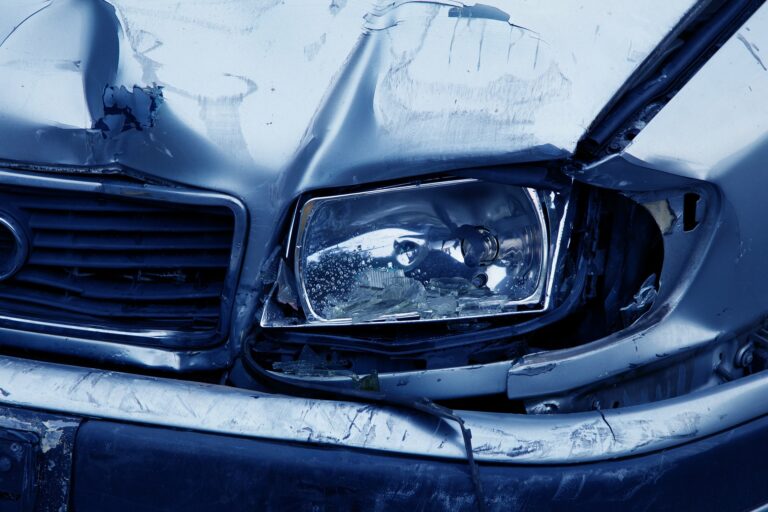Cory Wilson in a criminal defence lawyer with significant experience defending allegations of dangerous driving. Recognized as one of Calgary and the surrounding area’s best dangerous driving lawyers, Cory Wilson has had significant success in having his clients’ charges withdrawn before trial or found not guilty at trial.
What is Dangerous Driving?
Dangerous driving is broadly defined in section 320.13 of the Criminal Code and is committed when a person operates a motor vehicle, sea-going vessel, aircraft or railroad equipment in a manner that is dangerous to the public, having regard to al the circumstances, including the nature, condition, amount of traffic and use of the place in which operation occurred.
To establish proof of the offence beyond a reasonable doubt, the Crown Prosecutor must prove that the accused committed the act and that they intended to do so, or acted negligently in doing so. The standard for negligence in dangerous driving is objective negligence which means the Crown must prove that the actions of the accused demonstrated a marked departure from that of a reasonable person in the same circumstances.
A judge will take into consideration observations of witnesses as to the nature of the driving such as:
- Crossing road lines
- Driving over curbs
- Speed
- Failure to obey roads signs including traffic lights
- Tailgating
- Collisions with other vehicles, people or objects
- Compliance with police direction when ordered to stop the vehicle
The judge must also be satisfied that the accused had the mental intent for the dangerous conduct. This means that the judge must be satisfied beyond a reasonable doubt, on the basis of all the evidence, including evidence about the accused’s actual state of mind, if any, that the conduct amounted to a marked departure from the standard of care that a reasonable person would observe in the circumstances. If an accused testifies as to an explanation for the dangerous driving, the judge must be satisfied that a reasonable person in similar circumstances ought to have been aware of the risk and the danger involved in the driving pattern.
How Do They Prove Dangerous Driving?
To determine if you have committed dangerous driving, a judge will look at the manner in which the vehicle was operated, not just at whether there was an accident or if anybody was hurt. Simply because there was a car accident or somebody was hurt or killed, doesn’t mean you were driving dangerously. Even if you were driving at a high rate of speed, that alone is not generally enough to be charged with or convicted of dangerous driving.
Dangerous driving is assessed by objectively looking at whether the driving amounted to a “marked departure” from the standard of care a reasonable person would observe in the same circumstances. Even if you didn’t intend to drive dangerously, if the prosecutor can provide the driving pattern was a marked departure from the norm, you may be convicted.
What is a Marked Departure?
In order to be convicted of dangerous driving, your conduct must amount to a marked departure for the standard of care that a reasonable person would observe in the same circumstances. A slight departure from the norm is not enough to base a conviction. The lack of care in driving must be serious enough that it requires criminal punishment.

What is the Penalty for Dangerous Driving?
The penalties associated with a conviction for dangerous driving differ depending on the particular circumstances of the case. Like most offences, many factors are taken into consideration in the determination of a proper sentence. These factors include:
- the circumstances in which the offence was committed
- the accused’s background
- property damage
- The driving caused injury or death
- Consumption of drugs or alcohol
- Racing or stunting
- Driving while distracted (cell phone or other handheld device)
If the Crown Prosecutor proceeds by way of summary conviction, the accused faces a maximum penalty of 6 months imprisonment and/or a $5,000 fine. If the Crown proceeds by indictment, the maximum penalty is 5 years’ imprisonment. Whether the Crown proceeds by summary or indictment is based on the severity of the allegations.
If the accused caused bodily harm or death to another individual as a result of the dangerous driving, the charges must proceed by way of indictment. Dangerous driving causing bodily harm carries a maximum penalty of 10 years’ imprisonment. Dangerous driving causing death carries a maximum penalty of 14 years’ imprisonment.
What are Defences to Dangerous Driving?
There are a variety of defences for individuals charged with dangerous driving based on the circumstances of each specific case. The most important step in determining what defences are available to you, is to hire an experienced lawyer who can properly assess your case. Cory Wilson has successfully represented countless individuals charged with dangerous driving.
Determining whether an accused has committed dangerous driving contrary to section 249 of the Criminal Code is done by looking at the manner in which the vehicle was operated as opposed to the consequences of the driving. Simply because there was an unfortunate result of the driving, such as a collision, bodily harm or death, does not automatically mean that the operation was done in a dangerous manner.
A common defence to dangerous driving is to show that there was not a marked departure from the standard of car that a reasonable person would observe in the accused’s circumstances. A minor departure from the appropriate standard of care does not constitute dangerous driving. The difference between a minor and marked departure is a matter of degree.
Another common defence is that the dangerous driving was caused by a momentary loss of attention, rather than an ongoing marked departure. Most cases demonstrating a very brief or momentary loss of attention will not be sufficient to form a conviction.
Unexpected medical impairments such as black-outs, hallucinations and seizures may also afford a defence to dangerous driving. Medical evidence will be required to demonstrate the impairment was unexpected as opposed to an individual who voluntarily chose not to take prescribed medication leading to the impairment.
How do I get my Dangerous Driving Charge Dropped?
The most important first step getting your dangerous driving charge dropped is to hire a criminal defence lawyer with experience representing individuals charged with driving offences. Over the course of his career, Cory Wilson has successfully represented countless individuals charged with driving offences, including dangerous driving.
The most common way of having dangerous driving charges dropped is by negotiating the criminal charge to be lessened to careless driving under the Traffic Safety Act. A careless driving conviction is not a criminal conviction and does not appear on a criminal record. Generally, the penalty for a careless driving conviction is a fine and demerits on your driving abstract.
Another way to get a charge of dangerous driving dropped is to hire an experienced lawyer who can convince the Crown Prosecutor to withdraw the charges prior to trial. Cory Wilson frequently meets with Crown Prosecutors on a without prejudice basis to discuss the problems with the Crown’s case and to convince the prosecutor that there is no likelihood of conviction. Without prejudice means that the prosecutor can’t use the information learned in the meeting against the accused at trial or to further the prosecution.
Dangerous Driving FAQs
- What is dangerous driving?
- What is the penalty for dangerous driving?
- What are defences to dangerous driving?
- How can I get my dangerous driving charges dropped?
Cory Wilson is a criminal defence lawyer based in Calgary. If you have been charged with a criminal offence or are a suspect in a criminal investigation, call today for a free, no-obligation consultation.


